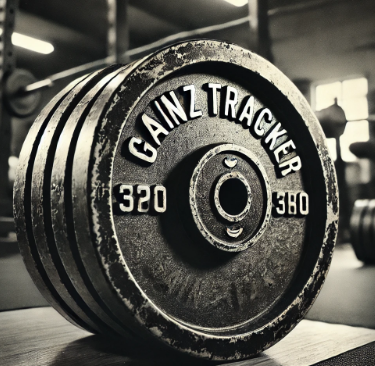Building Bigger Stronger Tricep Muscles
Published By GainzTracker, 25th September 2024

The Ultimate Guide to Training Your Triceps
Introduction
Your triceps are crucial for developing overall arm strength and size. Located at the back of the upper arm, the triceps make up two-thirds of your arm’s muscle mass. Strong triceps not only improve your upper body aesthetics but also support performance in other exercises like bench presses and push-ups. In this article, we’ll explore the best exercises, techniques, and tips for building powerful triceps.
Anatomy of the Triceps
Before diving into the exercises, it’s important to understand the anatomy of the triceps. The triceps brachii consists of three heads:
- Long Head: This head runs down the back of the arm and is responsible for overhead movements.
- Lateral Head: Positioned on the outer part of the arm, the lateral head is engaged during pushing movements.
- Medial Head: Located underneath the long and lateral heads, the medial head helps with arm extension and stabilizing the elbow.
Top Exercises for Triceps Growth
To effectively train your triceps, it’s important to target all three heads. Below are some of the best exercises for building strong, well-rounded triceps:
- Close-Grip Bench Press: A compound movement that emphasizes the triceps by narrowing your grip on the barbell. This exercise is great for targeting both the long and lateral heads.
- Triceps Dips: Dips are a bodyweight exercise that primarily engages the triceps. You can perform them using parallel bars or on the edge of a bench for a deeper stretch.
- Skull Crushers: Also known as lying triceps extensions, this movement targets the long head by allowing your arms to move through a full range of motion. Be sure to control the weight to avoid injury.
- Overhead Triceps Extensions: This exercise focuses on the long head of the triceps, which is activated when your arms are extended above your head. Use a dumbbell or a barbell for variation.
- Triceps Pushdowns: Using a cable machine with a straight or V-bar, pushdowns provide constant tension on the triceps, especially the lateral and medial heads.
Training Tips for Maximum Triceps Gains
To get the most out of your triceps workouts, it’s essential to follow these key tips:
- Focus on Form: Proper form is crucial when training your triceps. Avoid flaring your elbows too much during exercises to keep tension on the muscle and reduce stress on your shoulders.
- Vary the Angles: Incorporate both vertical and horizontal movements in your routine to ensure all three heads of the triceps are being worked.
- Use Progressive Overload: Gradually increase the weight or repetitions over time to continually challenge your triceps and stimulate growth.
- Train with High Volume: Triceps muscles respond well to higher rep ranges (8-15 reps per set). Make sure to include multiple sets for each exercise.
- Include Compound Movements: In addition to isolation exercises, compound movements like bench presses and push-ups will help you build triceps strength and size.
Sample Triceps Workout Routine
Here’s a sample workout to get you started on building stronger triceps:
- Close-Grip Bench Press: 4 sets of 8-10 reps
- Skull Crushers: 3 sets of 10-12 reps
- Overhead Dumbbell Triceps Extension: 3 sets of 10-12 reps
- Triceps Pushdowns: 3 sets of 12-15 reps
- Dips: 3 sets of 8-12 reps (bodyweight or weighted)
Conclusion
Training your triceps is essential for building stronger, more defined arms and improving your overall upper body strength. By incorporating a variety of exercises and focusing on all three heads of the triceps, you’ll see significant gains in size and strength. Remember to maintain good form, use progressive overload, and keep your workouts varied for the best results.
Call to Action
Ready to take your triceps training to the next level? Start incorporating these exercises and tips into your routine today, and watch your arms grow stronger and more defined!
Disclaimer: The information provided in this article is for educational purposes only and is not intended as a substitute for professional medical advice, diagnosis, or treatment. Always consult with a healthcare provider before beginning any exercise program. Use caution when performing exercises to avoid injury.